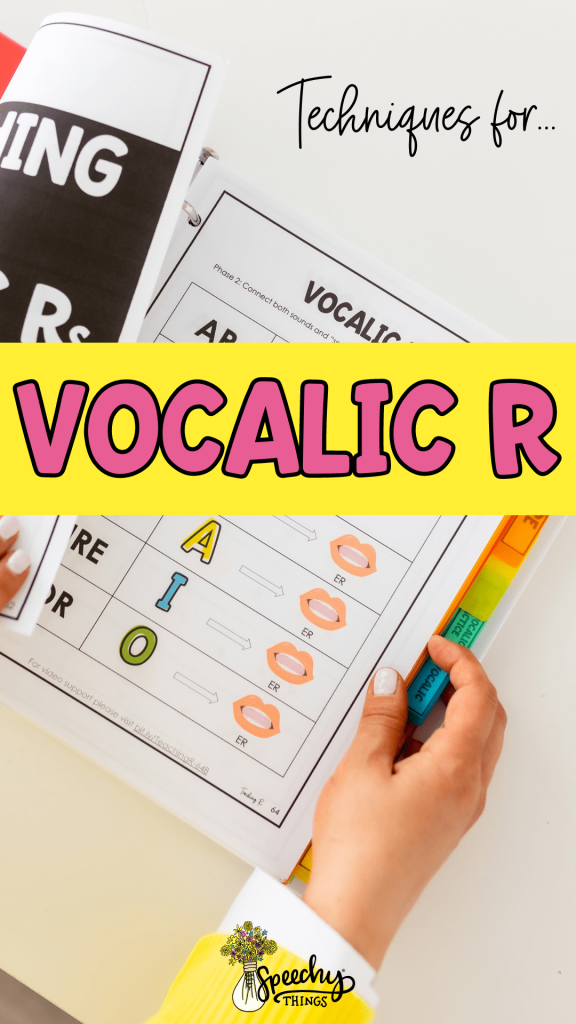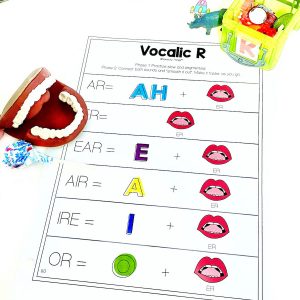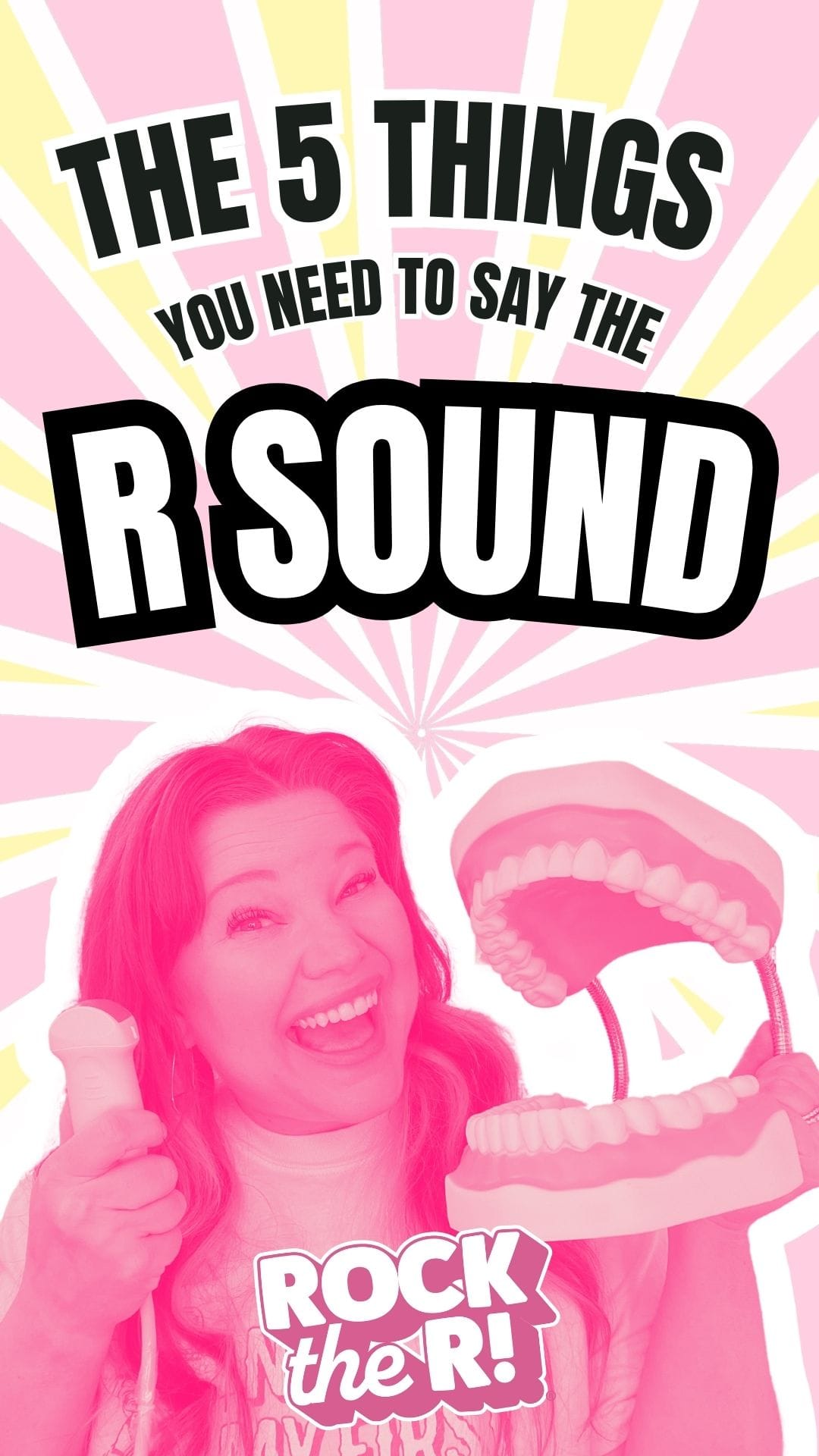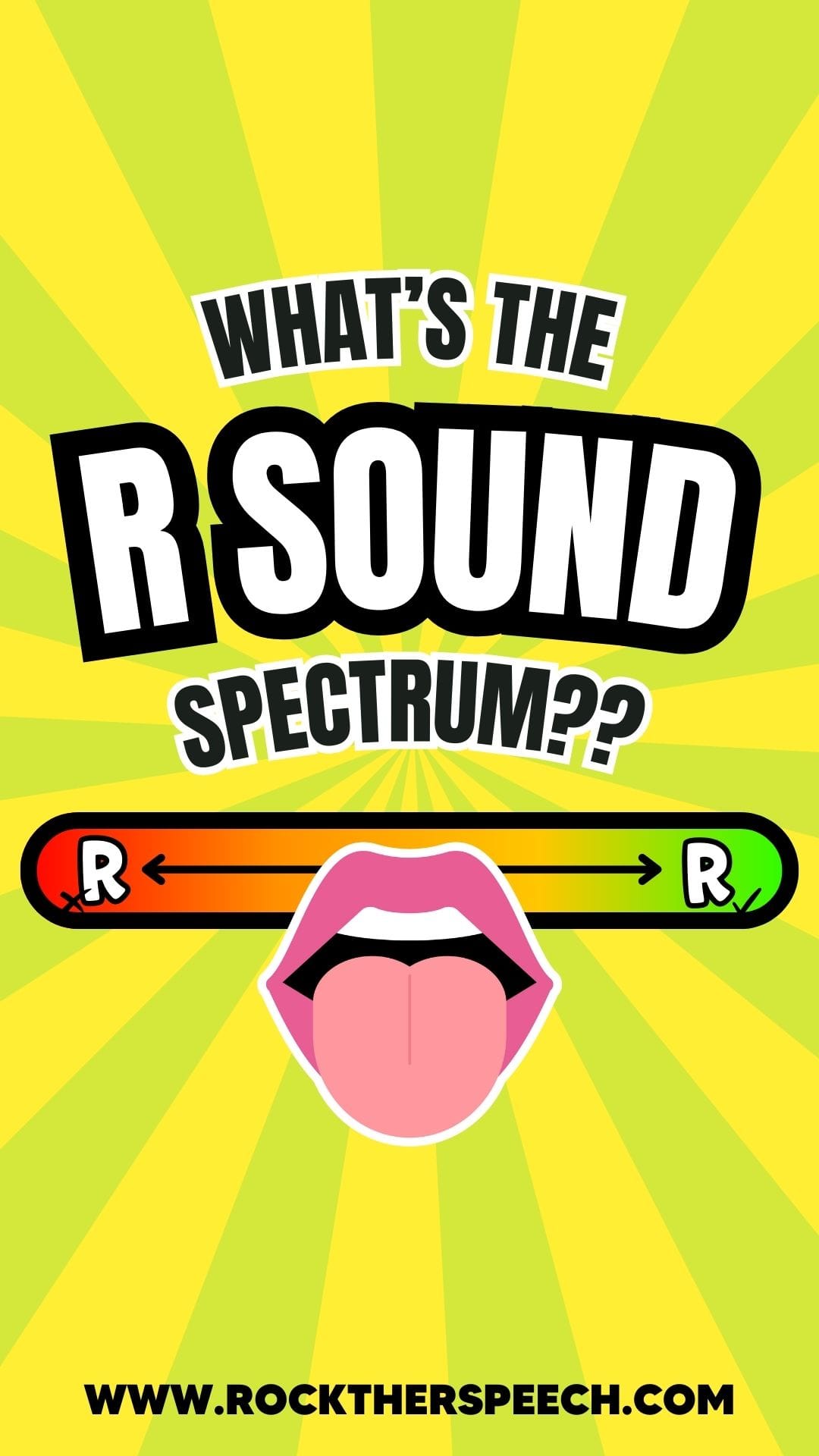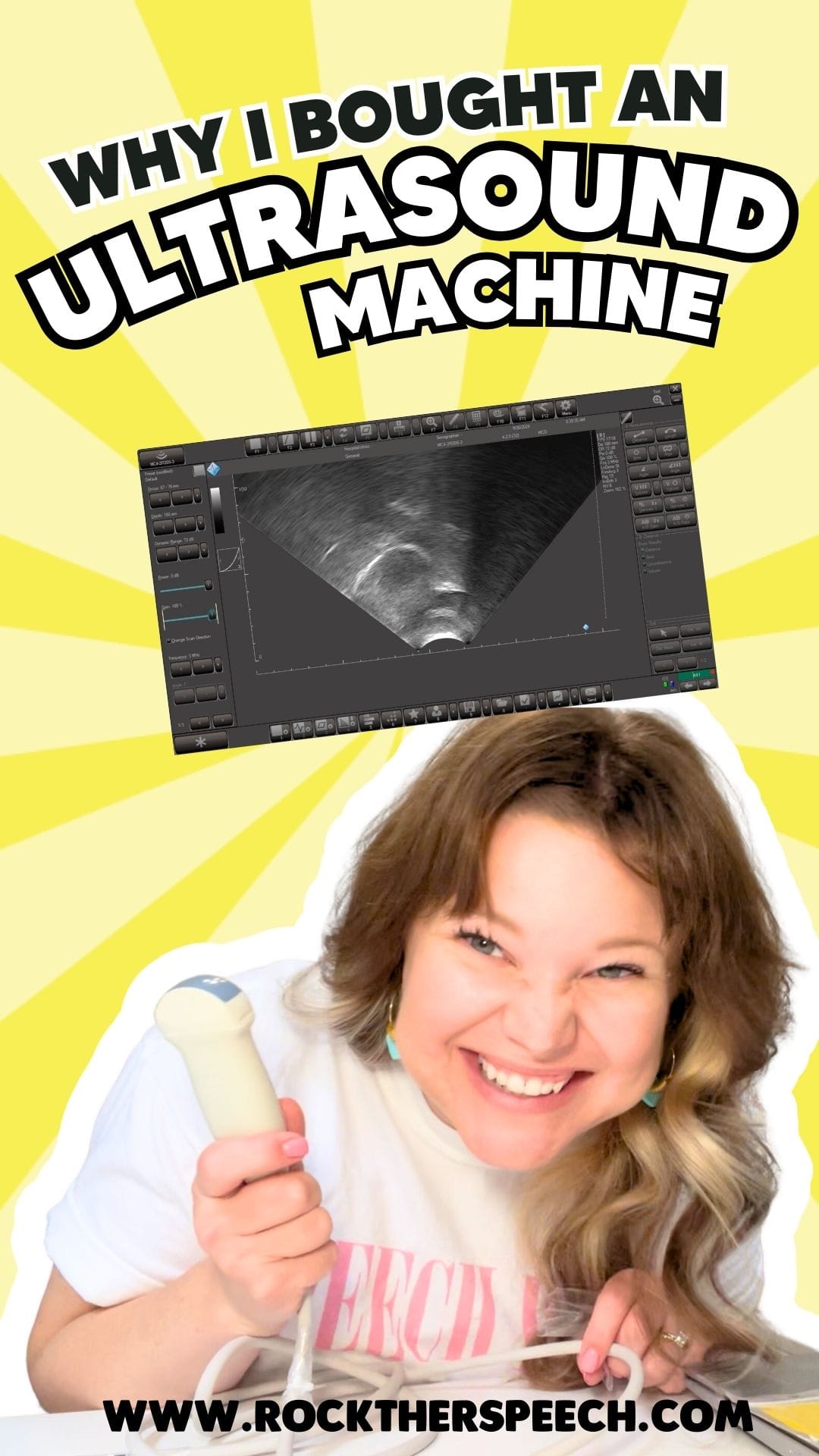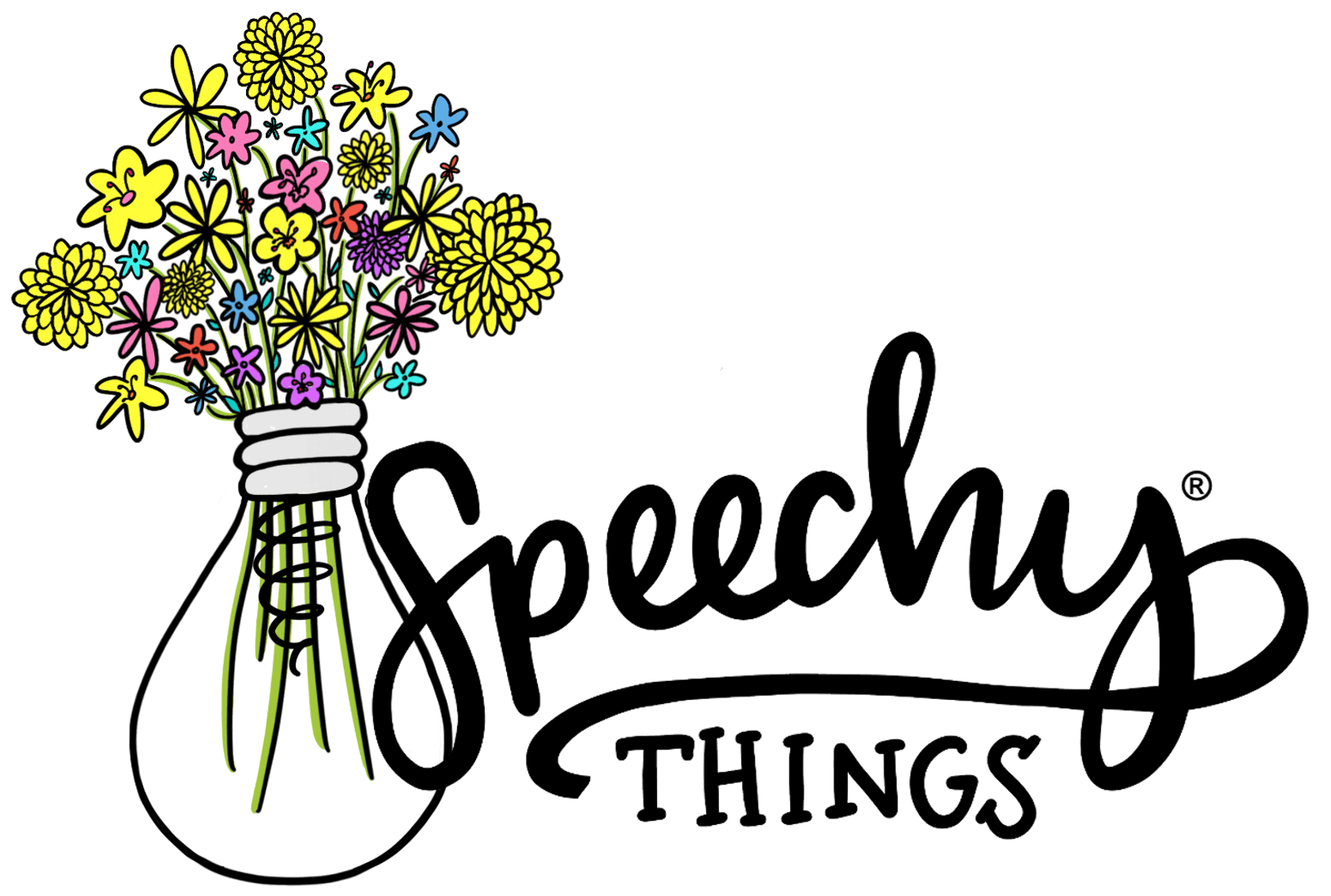I’ve gotten several questions lately about the dreaded vocalic R. I get it. Vocalic R is… complicated.
There are so many of them (AIR, EAR, IRE, OR, AR, ER). They behave differently depending on whether they’re sandwiched between two vowels or if there’s a consonant thrown in next to it. It’s a lot to deal with. BUT…
Vocalic Rs can also lend themselves nicely to facilitating contexts. (AR and EAR tend to be some of my favorites for elicitation though some students seem to find AR very tricky. Every person is so different!).
Here’s how I typically tackle it.
Once the student can say the R in any context, I like to break vocalic Rs down like this:
(Page from Teaching R)
I teach many of my students to think about their vocalic R like two different sounds: the vowel + R. With the exception of ER, where you have to shoot straight into the position for R from the previous consonant, the rest of the vocalic Rs (EAR, AIR, IRE, OR, AR) have a nice juicy vowel to give the brain and tongue plenty of time to move into that nice, strong R sound.
Also a little secret for you… if you pay close attention sometimes it’s actually the vowel that’s giving a student grief. I use a lot of explicit directions, visuals (like above), and even hand gestures to help them understand to not let the vowel and the R mush together. The tongue should not move into the R during the vowel or it will distort the word. Bringing out a mirror can be helpful for this as well.
Next time your student’s vocalic R sounds off, remember this blog post and give that visual a try! For more R tips, be sure to sign up for my VIP emails. I send helpful stuff about once a week, give-or-take. You can unsubscribe any time. I hope this was helpful!
You’ve got this!







